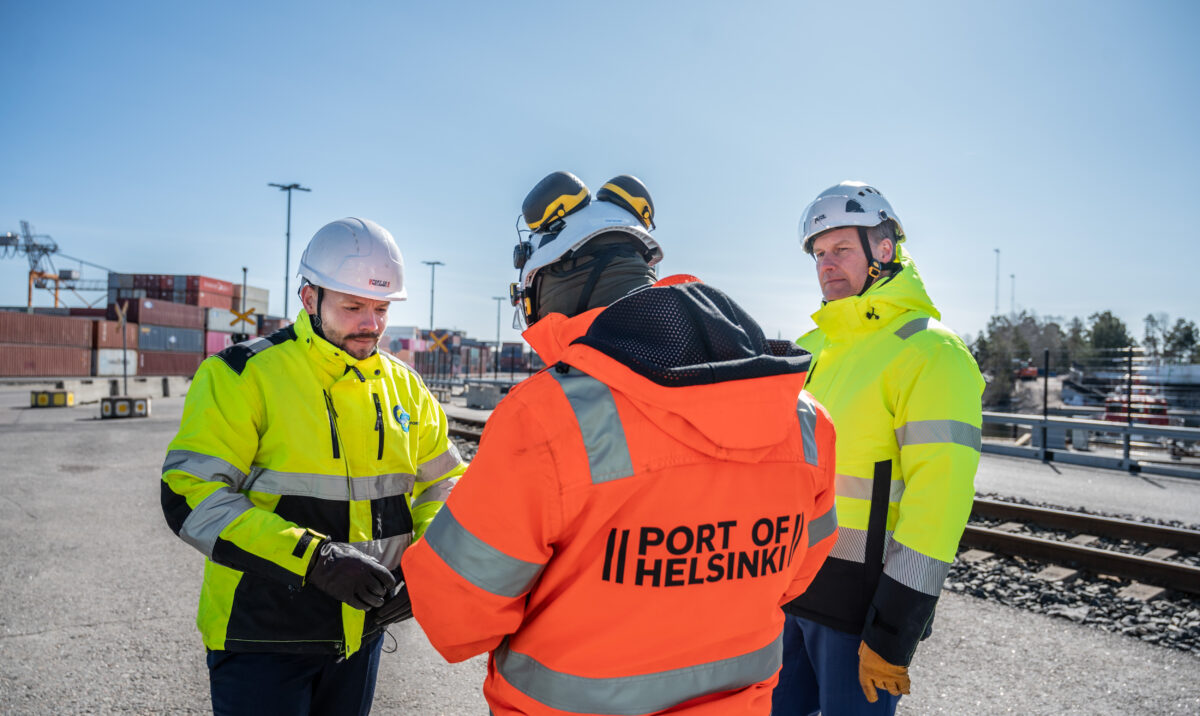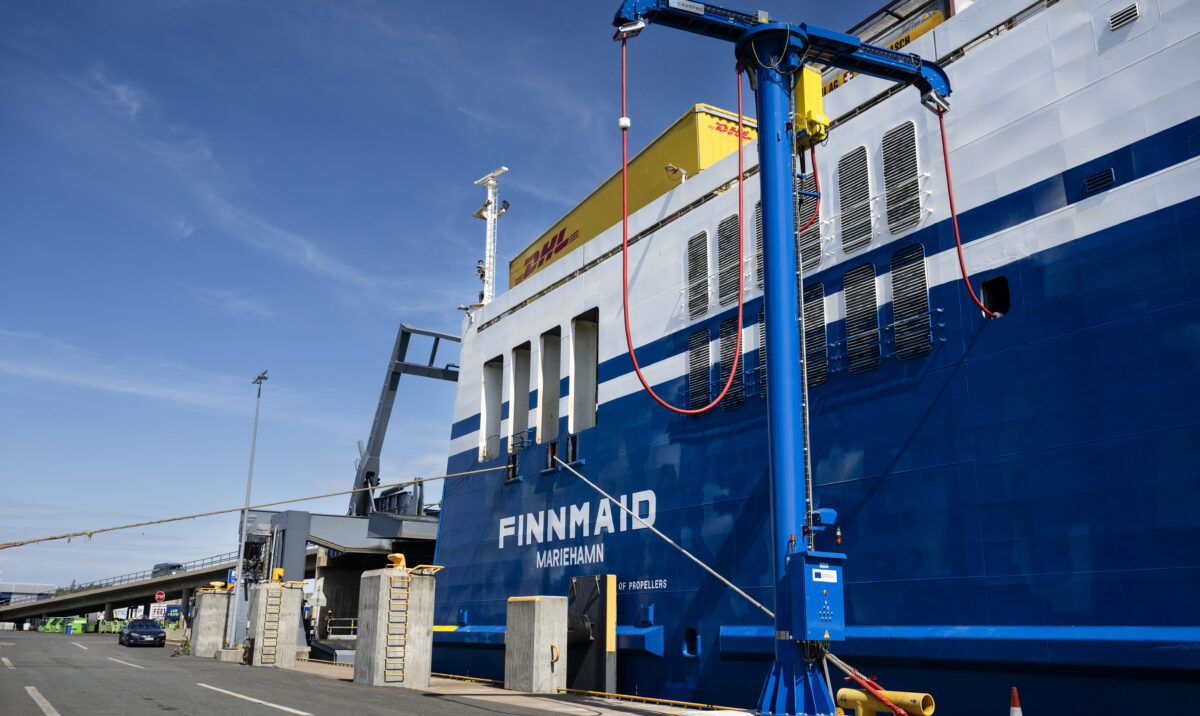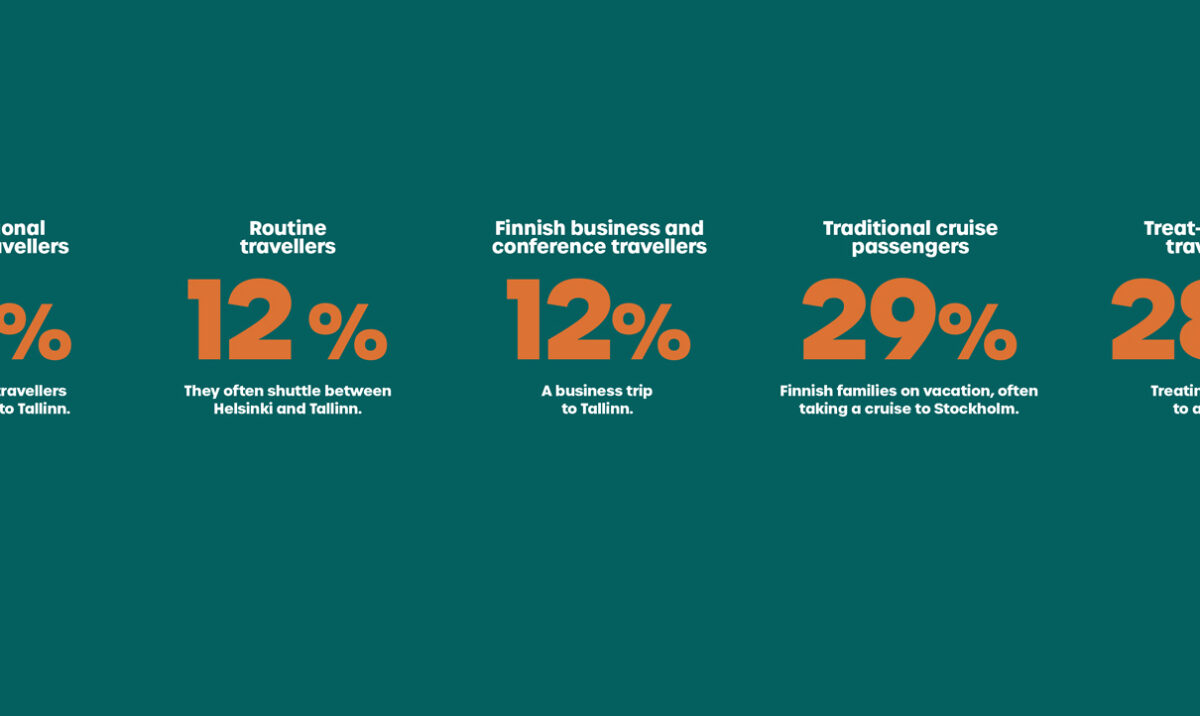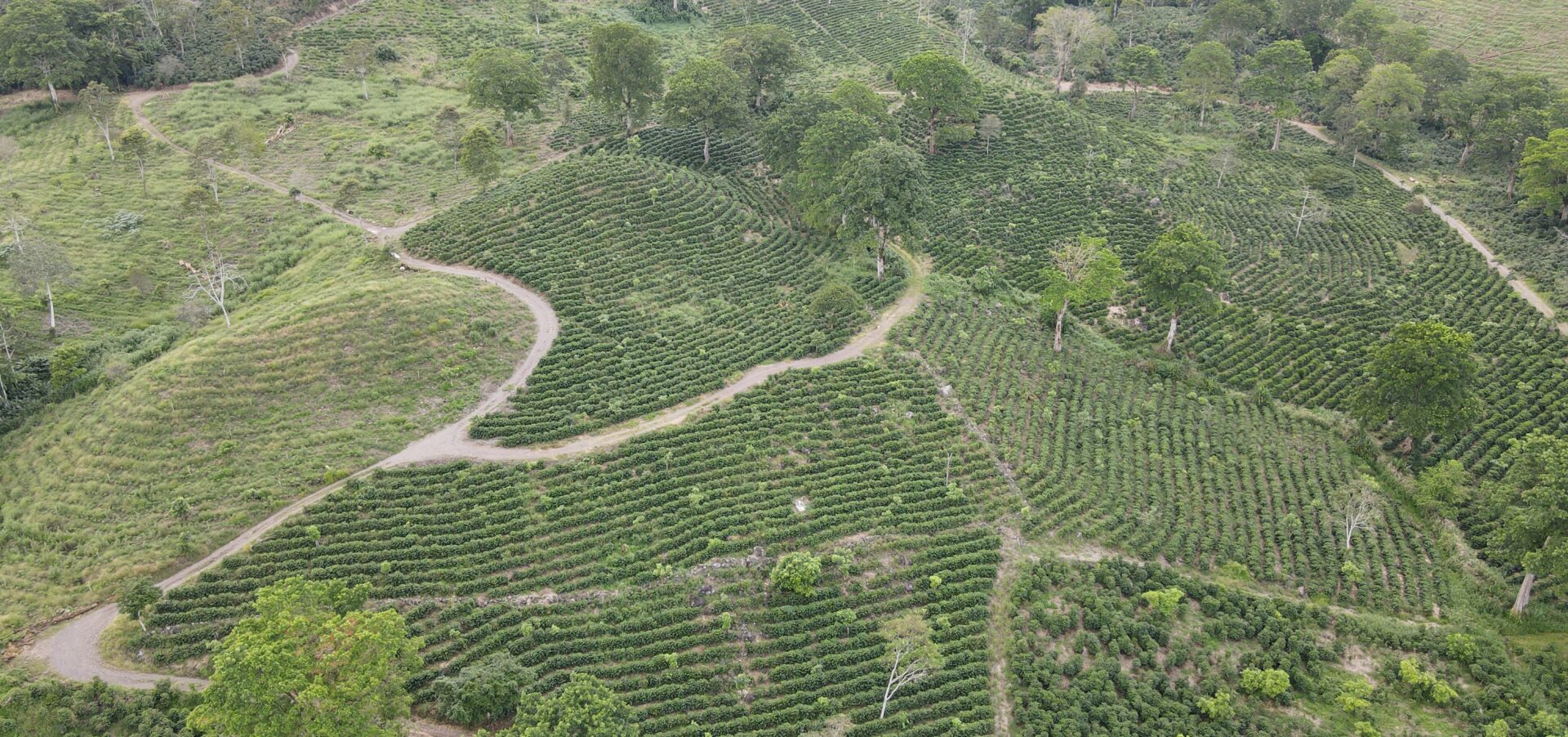
Coffee comes from container to cup
Coffee is one of the most important commodities in global trade, and Finns are some of the most enthusiastic coffee drinkers in the world. All of the coffee containers arriving at Paulig’s roastery are brought to Finland via the Port of Helsinki.
According to Finland’s coffee and roastery association (Kahvi- ja paahtimoyhdistys), more than 90 per cent of Finns drink coffee. Around 50 million kilos of coffee is consumed in Finland every year – an average of 4–5 cups per day per person. Globally, about 1.5 billion cups of coffee are drunk each day.
Transport and Customs Manager Tapio Hyvönen works in logistics at the Paulig Group, and is responsible for incoming shipments of coffee. He has also visited coffee plantations in Tanzania and Costa Rica.
“I wanted to learn more about coffee cultivation and pick some coffee berries myself.”
Paulig receives a great many coffee samples from all around the world. Each sample is inspected and tasted before feedback is sent to the supplier.
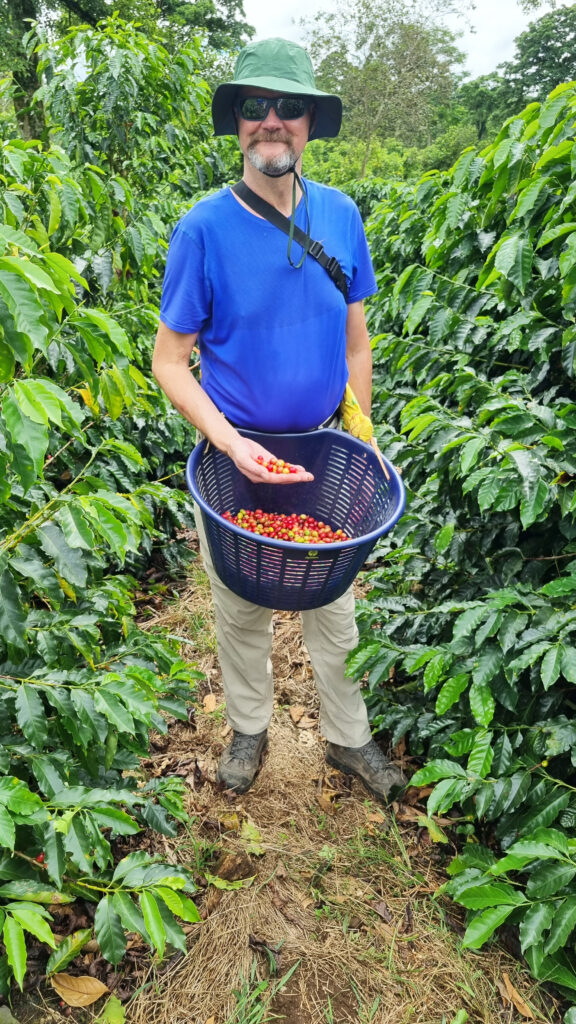
“The samples arrive as raw coffee. The crop will vary from year to year, so Paulig always selects those batches that best suit our requirements. For example, we always keep the taste profile of Juhla Mokka exactly the same,” says Hyvönen.
Coffee beans are sent to Finland in 20-foot containers, and are packed in a large inner bag that is suspended from hooks inside the container. This bag is filled with raw coffee in the country of origin. It is a perfect logistical solution, as there is no surplus packaging material or unused space. The only empty space is just below the roof of the container. Each container can hold up to 21.6 tons of raw coffee.
Coffee is harvested as berries
Coffee is grown on coffee plantations. A coffee plant is a shrub or small tree that produces coffee berries. After picking, the berry pulp is removed to leave only the seeds, which we call ‘beans’. Six kilos of berries produce one kilo of beans for delivery to Paulig in Finland.
Raw coffee makes its way to Finland on vessels owned by some of the world’s largest shipping container companies.
“A container vessel leaves the coffee port for Finland once a week,” says Hyvönen.
The coffee supplier will collect an empty container from the port, and then fill it with coffee that has been harvested on their plantation. The container is then returned to the port and – once the paperwork has been taken care of – is loaded onto a ship.
After about a month at sea, the ship arrives at its transit port in Europe. Here, the containers will be transferred from large oceanic vessels to the smaller feeder ships that will bring them to Finland.
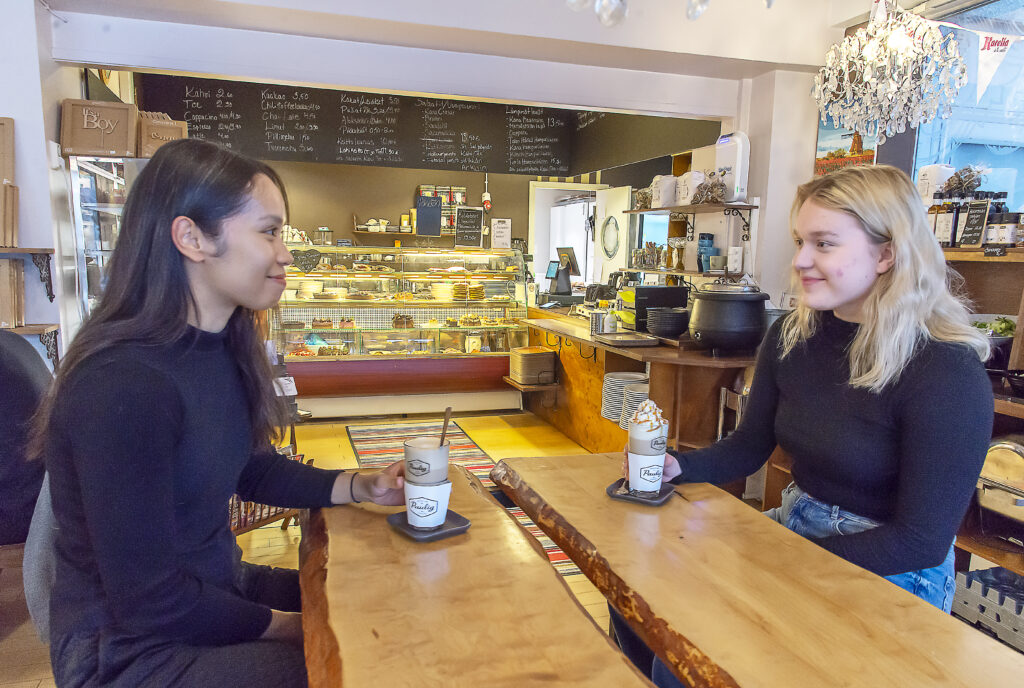
Low-emission requirements for shipping companies
In the food and drink industry, Paulig is a forerunner in sustainability and the green transition. It is important to maintain sustainability throughout the entire chain, and this includes reducing emissions.
“We will soon be starting a new contractual term with our shipping companies. At Paulig, we made a major decision to ensure that all of our future coffee deliveries are sent via shipping companies that use low-emission solutions. This will help nature and the environment,” says Hyvönen.
The longest sea journey is for raw coffee coming from East Africa, as shipping companies now avoid using the Suez Canal due to the threat of terrorism. The ships must therefore go round the Cape of Good Hope. This increases their journey time to almost two months, and it also takes time to load and unload the containers.
Approximately 25 per cent of the Paulig Group’s sales are generated by coffee.
“The good thing about coffee is that it has a very low moisture content – about 10 per cent. The only real challenge with transporting coffee is that condensation will collect in containers coming from warmer areas to Finland’s cooler climate. Which is why we use containers that allow moisture to escape through small vents.”
The fewer temperature changes that raw coffee experiences, the better it will be preserved, as raw coffee has not yet been processed, roasted or ground.
“As soon as raw coffee is processed, it becomes extremely sensitive to all kinds of fluctuations. It should be stored in an airtight package, so that its fine aromas are not scattered to the four winds.”
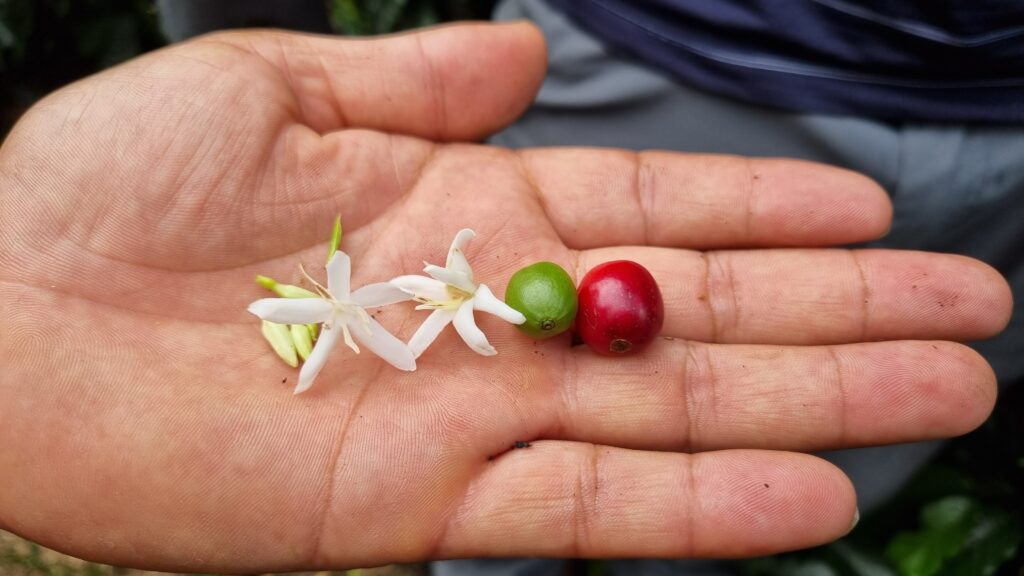
A roastery right next to the port
No coffee container will leave its port of origin until it has been approved by Paulig. Suppliers send samples from each purchased batch by air mail.
“These samples will be analysed in Paulig’s laboratory to ensure that they meet our quality standards.”
When the containers arrive in Vuosaari, Paulig’s partner collects and transports them to a roastery that is only 1.5 km from the port.
Finns drink about 4.4 cups of coffee per day.
“The containers are first weighed and then taken to an unloading area, where the inner bag is opened and the raw coffee is removed. The empty container is then cleaned and returned to the port.”
When the goods arrive at the roastery, they are transferred to a test silo while a sample is sent to Paulig’s laboratory for classification.
Paulig’s coffee production is largely automated.
“After the berries have been picked in the country of origin, the coffee will not be touched by hand until it is brewed and drunk at home, at work, or in cafés.
Facts
- Paulig receives about 1,500–2,000 containers of coffee each year.
- Coffee is grown in more than 60 countries. Paulig imports coffee from about 15 countries. Most of the coffee beans that end up in Finland come from South and Central America. Some coffee is also imported from East Africa, Vietnam and India.
- The Brazilian Port of Santos is the world’s largest coffee port, and the majority of the raw coffee that is headed for Finland is also shipped from here. The coffee plantations that send raw coffee to Finland are located about 500 kilometres from Santos.



